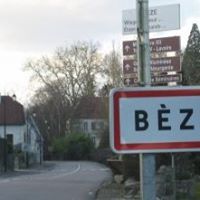Peter Jeffery Gruber
age ~79
from Scottsdale, AZ
- Also known as:
-
- Peter J Gruber
- Peter Of Jane Gruber
- Peter A Gruber
- Peter E Gruber
- Peter J Grubber
- Peter J Bruber
- Phone and address:
-
32932 69Th St, Scottsdale, AZ 85262
4804886190
Peter Gruber Phones & Addresses
- 32932 69Th St, Scottsdale, AZ 85262 • 4804886190
- Lincolnshire, IL
- Deerfield, IL
- Lenola, NJ
- Maricopa, AZ
- 334 Earls Ct, Deerfield, IL 60015 • 2179711079
Work
-
Company:Philadelphia Office
-
Address:3400 Civic Center Blvd, Philadelphia, PA 19104
-
Phones:8008792467
Education
-
School / High School:University Of Pennsylvania School Of Medicine1992
Languages
English
Awards
Healthgrades Honor Roll
Ranks
-
Certificate:Congenital Cardiac Surgery, 2010
Specialities
Cardiac Surgery
Lawyers & Attorneys

Peter R. Gruber, Wheaton IL - Lawyer
view sourceAddress:
Abear Law Office
460 South County Farm Road, Wheaton, IL 60187
6309043033 (Office)
460 South County Farm Road, Wheaton, IL 60187
6309043033 (Office)
Licenses:
Illinois - Active And Authorized To Practice Law 1991
Specialties:
Criminal Defense - 100%
Languages:
English

Peter Gruber - Lawyer
view sourceOffice:
Slingerland & Clark, P.C.
Specialties:
Criminal Defense
Criminal Defense
Criminal Defense
ISLN:
917231757
Admitted:
1991
Law School:
Loyola University, J.D.
Us Patents
-
Micro-Fluidic Injection Molded Solder (Ims)
view source -
US Patent:7980446, Jul 19, 2011
-
Filed:Mar 6, 2009
-
Appl. No.:12/399244
-
Inventors:Stephen L. Buchwalter - Anthem AZ, US
Peter A. Gruber - Mohegan Lake NY, US
Paul A. Lauro - Brewster NY, US
Jae-Woong Nah - Closter NJ, US -
Assignee:International Businss Machines Corporation - Armonk NY
-
International Classification:B23K 5/00
B23K 20/08
B22D 41/00 -
US Classification:228 33, 228256, 22818021, 22818022, 222251, 222288, 222564, 222591
-
Abstract:A portion of compliant material includes four walls defining a slot. The slot has a relatively large cross-section end in fluid communication with a solder reservoir, and also has a relatively small cross-section end opposed to the relatively large cross-section end. The slot has a generally elongate rectangular shape when viewed in plan, with a length perpendicular to a scan direction, a width, parallel to the scan direction, associated with the relatively large cross section end, and a width, parallel to the scan direction, associated with the relatively small cross section end. The slot is configured in the portion of compliant material such that the relatively small cross-section end of the slot normally remains substantially closed, but locally opens sufficiently to dispense solder from the reservoir when under fluid pressure and locally unsupported by a workpiece. Methods of operation and fabrication are also disclosed.
-
Micro-Fluidic Injection Molded Solder (Ims)
view source -
US Patent:8136714, Mar 20, 2012
-
Filed:Apr 18, 2011
-
Appl. No.:13/088727
-
Inventors:Stephen L. Buchwalter - Anthem AZ, US
Peter A. Gruber - Mohegan Lake NY, US
Paul A. Lauro - Brewster NY, US
Jae-Woong Nah - Closter NJ, US -
Assignee:International Business Machines Corporation - Armonk NY
-
International Classification:B23K 5/00
B23K 20/08
B22D 41/00 -
US Classification:228 33, 228256, 22818021, 22818022, 222251, 222288, 222564, 222591
-
Abstract:A portion of compliant material includes four walls defining a slot. The slot has a relatively large cross-section end in fluid communication with a solder reservoir, and also has a relatively small cross-section end opposed to the relatively large cross-section end. The slot has a generally elongate rectangular shape when viewed in plan, with a length perpendicular to a scan direction, a width, parallel to the scan direction, associated with the relatively large cross section end, and a width, parallel to the scan direction, associated with the relatively small cross section end. The slot is configured in the portion of compliant material such that the relatively small cross-section end of the slot normally remains substantially closed, but locally opens sufficiently to dispense solder from the reservoir when under fluid pressure and locally unsupported by a workpiece. Methods of operation and fabrication are also disclosed.
-
Micro-Fluidic Injection Molded Solder (Ims)
view source -
US Patent:8162200, Apr 24, 2012
-
Filed:Jun 9, 2011
-
Appl. No.:13/156736
-
Inventors:Stephen L. Buchwalter - Anthem AZ, US
Peter A. Gruber - Mohegan Lake NY, US
Paul A. Lauro - Brewster NY, US
Jae-Woong Nah - Closter NJ, US -
Assignee:International Business Machines Corporation - Armonk NY
-
International Classification:B23K 31/02
B26D 3/00
B29C 65/64 -
US Classification:228 33, 22818022, 228256, 156256, 264145, 264152, 29428
-
Abstract:A portion of compliant material includes four walls defining a slot. The slot has a relatively large cross-section end in fluid communication with a solder reservoir, and also has a relatively small cross-section end opposed to the relatively large cross-section end. The slot has a generally elongate rectangular shape when viewed in plan, with a length perpendicular to a scan direction, a width, parallel to the scan direction, associated with the relatively large cross section end, and a width, parallel to the scan direction, associated with the relatively small cross section end. The slot is configured in the portion of compliant material such that the relatively small cross-section end of the slot normally remains substantially closed, but locally opens sufficiently to dispense solder from the reservoir when under fluid pressure and locally unsupported by a workpiece. Methods of operation and fabrication are also disclosed.
-
Micro-Fluidic Injection Molded Solder (Ims)
view source -
US Patent:8376207, Feb 19, 2013
-
Filed:Feb 7, 2012
-
Appl. No.:13/367466
-
Inventors:Stephen L. Buchwalter - Anthem AZ, US
Peter A. Gruber - Mohegan Lake NY, US
Paul A. Lauro - Brewster NY, US
Jae-Woong Nah - Closter NJ, US -
Assignee:International Business Machines Corporation - Armonk NY
-
International Classification:B23K 5/00
B23K 20/08
B22D 41/00 -
US Classification:228 33, 228256, 22818021, 22818022, 222251, 222288, 222564, 222591
-
Abstract:A portion of compliant material includes four walls defining a slot. The slot has a relatively large cross-section end in fluid communication with a solder reservoir, and also has a relatively small cross-section end opposed to the relatively large cross-section end. The slot has a generally elongate rectangular shape when viewed in plan, with a length perpendicular to a scan direction, a width, parallel to the scan direction, associated with the relatively large cross section end, and a width, parallel to the scan direction, associated with the relatively small cross section end. The slot is configured in the portion of compliant material such that the relatively small cross-section end of the slot normally remains substantially closed, but locally opens sufficiently to dispense solder from the reservoir when under fluid pressure and locally unsupported by a workpiece. Methods of operation and fabrication are also disclosed.
-
Use Of Hdac And/Or Dnmt Inhibitors For Treatment Of Ischemic Injury
view source -
US Patent:20090105168, Apr 23, 2009
-
Filed:Nov 30, 2005
-
Appl. No.:11/791834
-
Inventors:Peter J. Gruber - Swarthmore PA, US
Jonathan A. Epstein - Radnor PA, US
Ibrahim Abdullah - Rigley PA, US -
International Classification:A61K 31/706
C07C 259/06
C07D 221/06
A61P 9/10
C12Q 1/48
C12Q 1/00
C07K 7/54
C07C 311/21 -
US Classification:514 43, 562621, 546 97, 530317, 564 86, 435 4, 435 15
-
Abstract:The present invention provides methods of ameliorating or reducing the extent of ischemic injury, reperfusion injury, and myocardial infarction, by administering an inhibitor of histone deacetylase enzyme (HDAC) or an inhibitor of DNA methyltransferase enzyme (DNMT).
-
Combination Polyimide Decal With A Rigid Mold
view source -
US Patent:20210151402, May 20, 2021
-
Filed:Nov 18, 2019
-
Appl. No.:16/686815
-
Inventors:- Armonk NY, US
Stephen L. Buchwalter - Anthem AZ, US
Peter A. Gruber - Mohegan Lake NY, US
Paul Alfred Lauro - Brewster NY, US
Da-Yuan Shih - Poughkeepsie NY, US -
International Classification:H01L 23/00
-
Abstract:Protruding solder structures are created for electrical attachment of semiconductor devices. A rigid mold having one or more mold openings is attached to and used in combination with a decal structure that has one or more decal holes. The decal structure is disposed on the rigid mold so that the decal openings are aligned over the mold openings. Each of the decal hole and mold opening in contact form a single combined volume. The single combined volumes are filled with solder to form protruding solder structures. Various structures and methods of making and using the structures are disclosed.
-
Continuous Solder Transfer To Substrates
view source -
US Patent:20200316702, Oct 8, 2020
-
Filed:Apr 8, 2019
-
Appl. No.:16/378547
-
Inventors:- ARMONK NY, US
Stephen L. Buchwalter - Anthem AZ, US
Peter A. Gruber - Mohegan Lake NY, US
Da-Yuan Shih - Poughkeepsie NY, US
Paul Alfred Lauro - Brewster NY, US -
International Classification:B23K 3/06
B23K 3/08
H01L 23/00 -
Abstract:In an Injection Molded Soldering system, a single, one-layer decal has one or more through hole patterns where each through hole pattern has a plurality of through holes through the decal. A drum with a drum circumference turns while the decal is forced to be adjacent to the drum circumference. The decal passes by a tangent point on the drum circumference where one or more solder-filled through hole patterns align with recessed openings on a substrate at the tangent point of the drum circumference. Applied heat causes the solder structures to melt and flow into the recessed openings.
-
Injection Molded Microoptics
view source -
US Patent:20200020738, Jan 16, 2020
-
Filed:Sep 23, 2019
-
Appl. No.:16/578827
-
Inventors:- Armonk NY, US
Stephen Buchwalter - Anthem AZ, US
Casimer DeCusatis - Poughkeepsie NY, US
Peter A. Gruber - Mohegan Lake NY, US
Da-Yuan Shih - Poughkeepsie NY, US -
International Classification:H01L 27/146
B29D 11/00
B82Y 30/00
G02B 3/00
H01L 31/0232
H01L 33/58
G02F 1/137
G02F 1/29 -
Abstract:A wafer-scale apparatus and method is described for the automation of forming, aligning and attaching two-dimensional arrays of microoptic elements on semiconductor and other image display devices, backplanes, optoelectronic boards, and integrated optical systems. In an ordered fabrication sequence, a mold plate comprised of optically designed cavities is formed by reactive ion etching or alternative processes, optionally coated with a release material layer and filled with optically specified materials by an automated fluid-injection and defect-inspection subsystem. Optical alignment fiducials guide the disclosed transfer and attachment processes to achieve specified tolerances between the microoptic elements and corresponding optoelectronic devices and circuits. The present invention applies to spectral filters, waveguides, fiber-optic mode-transformers, diffraction gratings, refractive lenses, diffractive lens/Fresnel zone plates, reflectors, and to combinations of elements and devices, including microelectromechanical systems and liquid crystal device matrices for adaptive, tunable elements. Preparation of interfacial layer properties and attachment process embodiments are taught.
Isbn (Books And Publications)





Von Dobler Bis DV-CAM: Ergonomics Fur Amateurfilm Zur Geschichte Der Kinematographie
view sourceAuthor
Peter Gruber
ISBN #
3631340230
Name / Title
Company / Classification
Phones & Addresses
Director
Glen Rose Lions Club
Civic/Social Association
Civic/Social Association
President/ceo
GRUBER INDUSTRIES INC
21439 N 2 Ave, Phoenix, AZ 85027
1309 E Rowlands, Phoenix, AZ 85022
1309 E Rowlands, Phoenix, AZ 85022
President, President/ceo, Director
GRUBER TECHNICAL INCORPORATED
Computer Maintenance/Repair Electrical Contractor · Electrical Work
Computer Maintenance/Repair Electrical Contractor · Electrical Work
21613 N 2 Ave, Phoenix, AZ 85027
21439 N 2 Ave, Phoenix, AZ 85027
1309 E Rowlands Ln, Phoenix, AZ 85022
6028632655
21439 N 2 Ave, Phoenix, AZ 85027
1309 E Rowlands Ln, Phoenix, AZ 85022
6028632655
Peter Gruber MD,PHD
Thoracic Surgery · Surgeons · Pediatric Surgeon
Thoracic Surgery · Surgeons · Pediatric Surgeon
34 & Civic Ctr Blvd, Philadelphia, PA 19104
2155902700
2155902700
Mbr
GRUBER INTERNET SERVICES, LC
Telephone Communications
Telephone Communications
8655 E Via De Ventura STE G181, Scottsdale, AZ 85258
8687 E Via De Ventura, Scottsdale, AZ 85258
8687 E Via De Ventura, Scottsdale, AZ 85258
Wikipedia References

Peter Gruber (Footballer)
License Records
Peter Gruber
License #:
E011934 - Expired
Category:
Emergency medical services
Issued Date:
Oct 16, 2009
Expiration Date:
Oct 31, 2011
Type:
Sierra-Sacramento Valley EMS Agency
Resumes

Fo At Globaljet
view sourcePosition:
fo at globaljet
Location:
United States
Industry:
Building Materials
Work:
globaljet
fo
fo
Medicine Doctors

Dr. Peter J Gruber, Philadelphia PA - MD (Doctor of Medicine)
view sourceSpecialties:
Cardiac Surgery
Address:
Philadelphia Office
3400 Civic Center Blvd, Philadelphia, PA 19104
8008792467 (Phone)
3400 Civic Center Blvd, Philadelphia, PA 19104
8008792467 (Phone)
Certifications:
Congenital Cardiac Surgery, 2010
General Surgery, 2001
Thoracic Cardiovascular Surgery, 2004
General Surgery, 2001
Thoracic Cardiovascular Surgery, 2004
Awards:
Healthgrades Honor Roll
Languages:
English
Hospitals:
Philadelphia Office
3400 Civic Center Blvd, Philadelphia, PA 19104
Hospital of the University of Pennsylvania
3400 Spruce Street, Philadelphia, PA 19104
3400 Civic Center Blvd, Philadelphia, PA 19104
Hospital of the University of Pennsylvania
3400 Spruce Street, Philadelphia, PA 19104
Education:
Medical School
University Of Pennsylvania School Of Medicine
Graduated: 1992
Medical School
Johns Hopkins University School Med
Graduated: 1992
University Of Pennsylvania School Of Medicine
Graduated: 1992
Medical School
Johns Hopkins University School Med
Graduated: 1992

Peter J. Gruber
view sourceSpecialties:
Congenital Cardiac Surgery (Thoracic Surgery), Transplant Surgery
Work:
University Of Iowa Cardiac & Thoracic Surgery
200 Hawkins Dr STE SE500GH, Iowa City, IA 52242
3193563440 (phone), 3193563891 (fax)
200 Hawkins Dr STE SE500GH, Iowa City, IA 52242
3193563440 (phone), 3193563891 (fax)
Education:
Medical School
University of Pennsylvania School of Medicine
Graduated: 1992
University of Pennsylvania School of Medicine
Graduated: 1992
Languages:
English
Description:
Dr. Gruber graduated from the University of Pennsylvania School of Medicine in 1992. He works in Iowa City, IA and specializes in Congenital Cardiac Surgery (Thoracic Surgery) and Transplant Surgery. Dr. Gruber is affiliated with University Of Iowa Hospitals & Clinics.

Peter J Gruber, Philadelphia PA
view sourceSpecialties:
Vascular Surgeon
Address:
1601 Walnut St, Philadelphia, PA 19102
1012 Laurel Oak Rd, Voorhees, NJ 08043
100 Mario Capecchi Dr, Salt Lake City, UT 84113
1012 Laurel Oak Rd, Voorhees, NJ 08043
100 Mario Capecchi Dr, Salt Lake City, UT 84113
Education:
Doctor of Medicine
Doctor of Philosophy
Doctor of Philosophy
Board certifications:
American Board of Thoracic Surgery Certification in Thoracic and Cardiac Surgery (Thoracic Surgery)
American Board of Thoracic Surgery Sub-certificate in Congenital Cardiac Surgery (Thoracic Surgery)
American Board of Thoracic Surgery Sub-certificate in Congenital Cardiac Surgery (Thoracic Surgery)
Plaxo

Peter Gruber
view sourceInfineon Technologies Past: Siemens AG
Googleplus

Peter Gruber
Work:
Zep Solar - Senior Product Development Engineer

Peter Gruber

Peter Gruber

Peter Gruber

Peter Gruber

Peter Gruber

Peter Gruber

Peter Gruber
Flickr

Peter Gruber
view source
Peter Gruber
view source
Peter Gruber
view source
Peter Gruber
view source
Gruber Peter
view source
Hans Peter Gruber
view source
Peter Gruber
view source
Peter Gruber
view sourceClassmates

Peter Gruber
view sourceSchools:
Middlesex High School Middlesex VA 1981-1985
Community:
Charles Cooke

Peter Gruber | Piedmont B...
view source
Peter Gruber | Foothill M...
view source
Addison Trail High School...
view sourceGraduates:
Annamarie Mancini (1987-1991),
Kristina Kolioulis (2000-2004),
Pete Gruber (1972-1976),
Robert Szuflita (1988-1992)
Kristina Kolioulis (2000-2004),
Pete Gruber (1972-1976),
Robert Szuflita (1988-1992)

Foothill Middle College, ...
view sourceGraduates:
Peter Gruber (1995-1999),
Seth Anison (2005-2009),
Gail Kirk (1992-1996),
Jerry Gaylor (1961-1972),
Evelyn Perez (2005-2009)
Seth Anison (2005-2009),
Gail Kirk (1992-1996),
Jerry Gaylor (1961-1972),
Evelyn Perez (2005-2009)
Youtube
Get Report for Peter Jeffery Gruber from Scottsdale, AZ, age ~79













